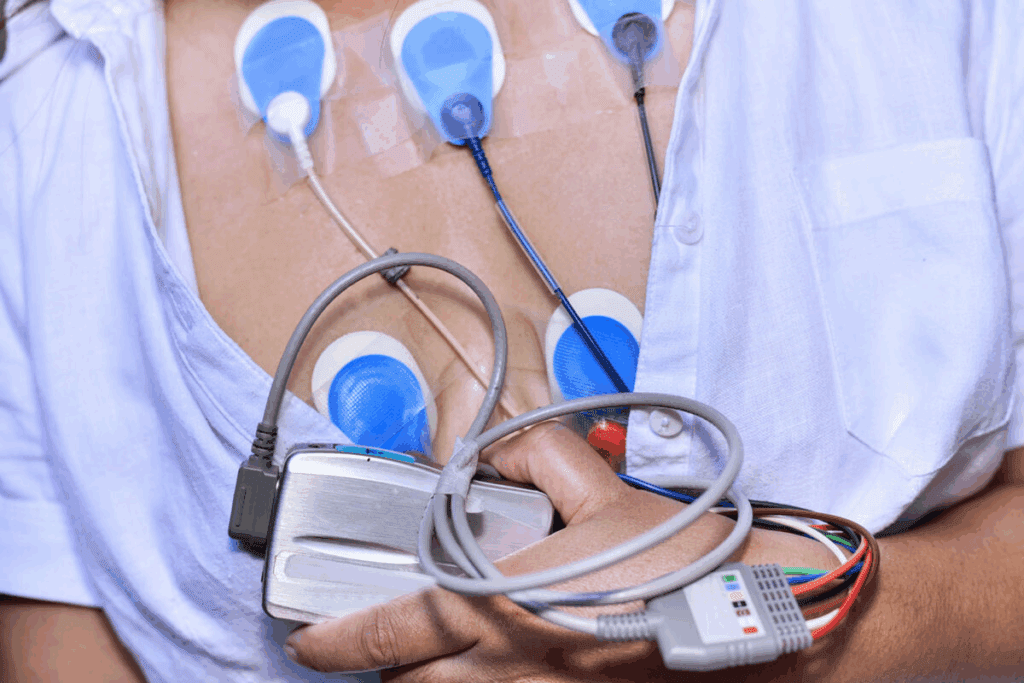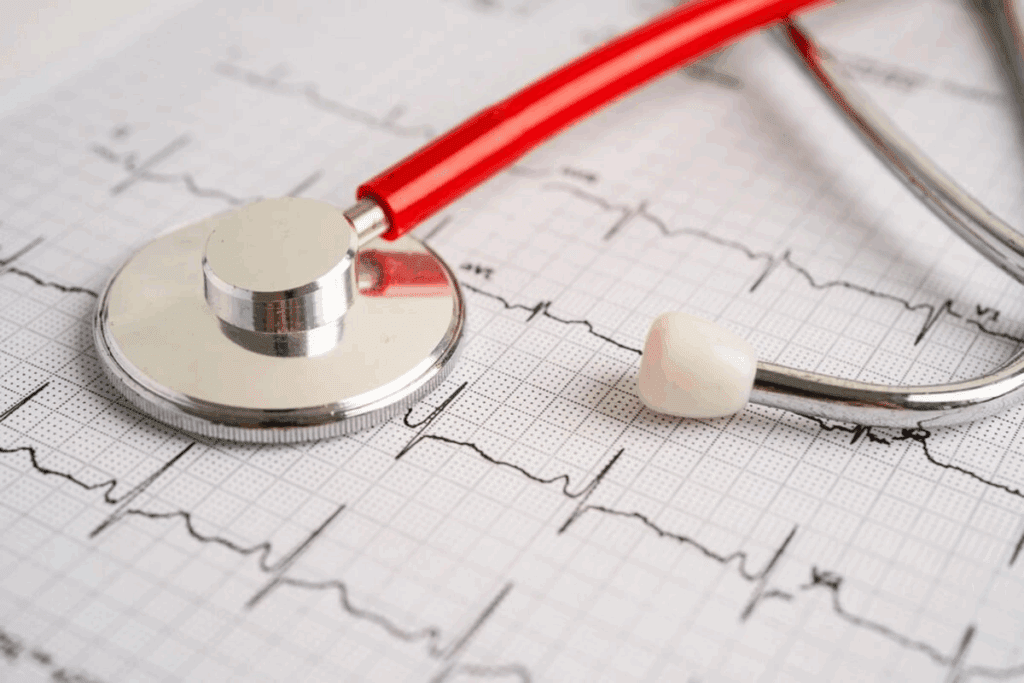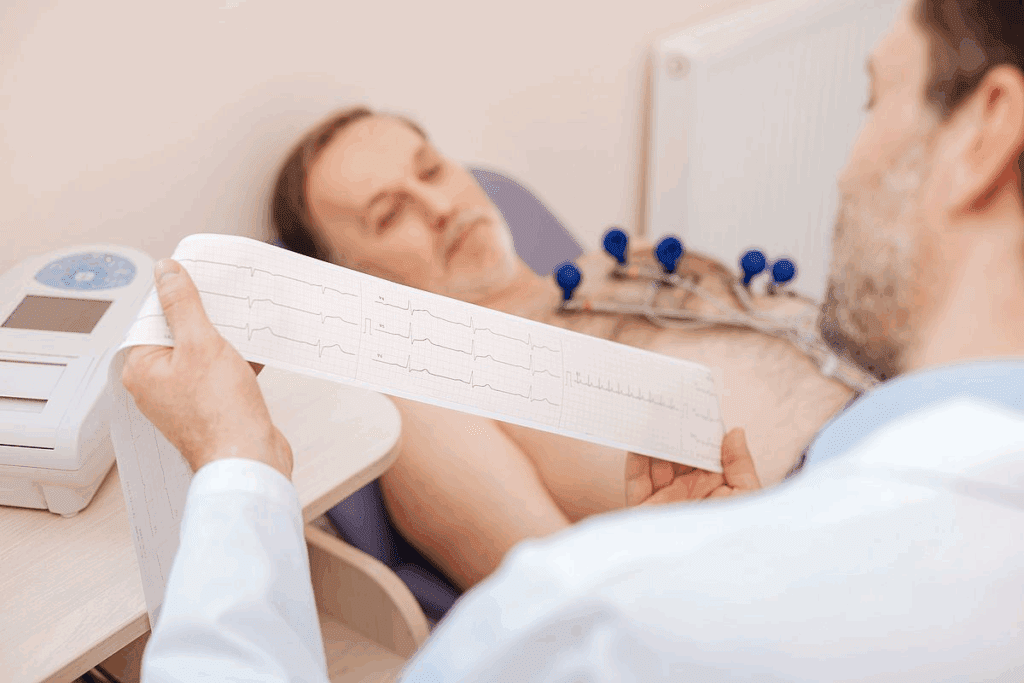Last Updated on October 31, 2025 by Batuhan Temel

Dealing with irregular heartbeats can be tough. At Liv Hospital, we know how important it is to find the right treatment. Our care is top-notch and based on solid evidence, ensuring the best results for our patients.
Medicines are key in managing heart rhythm issues like atrial fibrillation and ventricular tachycardia. When used correctly, these drugs can prevent heart attacks and strokes. This improves life quality for those affected.
It’s important to know the different medication options for managing irregular heartbeats. We’ll look at the top medications used, their uses, and benefits.
Discover top 7 cardiac arrhythmia medication for irregular heartbeat.

It’s important to understand cardiac arrhythmias to manage their health impact. These conditions make the heartbeat irregular, too fast, or too slow. Knowing what causes them is key to managing them well.
Irregular heartbeats can stem from many sources. These include heart disease, high blood pressure, and heart electrical system issues. Stress, caffeine, and some medications can also play a role. Finding the root cause is vital for the right treatment.
Here’s a table showing common causes of arrhythmias:
| Cause | Description |
| Heart Disease | Conditions like coronary artery disease and heart valve problems can cause arrhythmias. |
| High Blood Pressure | Hypertension can change the heart’s structure, leading to irregular heartbeats. |
| Electrical System Abnormalities | Problems with the heart’s electrical system can disrupt normal rhythms. |
Symptoms of cardiac arrhythmias vary. Common ones are palpitations, shortness of breath, and dizziness. Sometimes, arrhythmias don’t show symptoms, making regular check-ups important.
Spotting these symptoms early can help get timely medical help. This can greatly improve outcomes for those with arrhythmias.

Cardiac arrhythmias come in many forms, each needing its own treatment. We’ll look at the different arrhythmias that need medicine to manage them well.
Atrial fibrillation (AFib) and atrial flutter are common arrhythmias needing medicine. AFib has fast and irregular heartbeats. Atrial flutter has a regular but fast heartbeat. Medicines for AFib and flutter aim to control heart rate, rhythm, and prevent stroke. People with AFib often take anticoagulants to stop blood clots and stroke. Other drugs help control heart rate and get it back to normal.
“The management of atrial fibrillation involves a multifaceted approach, including rate control, rhythm control, and anticoagulation therapy to prevent stroke.”
— Journal of the American College of Cardiology
Ventricular arrhythmias start in the heart’s lower chambers and can be dangerous. Medicines like beta-blockers and antiarrhythmic drugs are key in managing ventricular arrhythmias. These drugs help keep the heart rhythm stable and prevent dangerous arrhythmias. Sometimes, an ICD is used with medicine.
| Type of Ventricular Arrhythmia | Common Medications | Purpose |
| Ventricular Tachycardia | Beta-blockers, Amiodarone | Rate control, rhythm stabilization |
| Ventricular Fibrillation | Antiarrhythmic drugs | Prevent recurrence |
Bradyarrhythmias have slower heart rates, causing symptoms like dizziness and fatigue. Medicines might be used for bradyarrhythmias, but pacemakers are usually the main treatment. For some cases, drugs like atropine can temporarily raise heart rate.
Knowing about the different arrhythmias and their treatments is key for managing them well. We’ve talked about how medicines treat atrial fibrillation, ventricular arrhythmias, and bradyarrhythmias. It shows how important it is to have treatments that fit each person’s needs.
Cardiac arrhythmia treatment uses many methods, with medicine being a big part. The main goal is to fix the heart’s rhythm, ease symptoms, and avoid serious problems.
We use two main ways to manage cardiac arrhythmias: rate control and rhythm control. Knowing the difference between these is key for good treatment.
Rate control aims to control the heart rate to ease symptoms, not fix the rhythm. It’s often used for atrial fibrillation. Medicines like beta blockers and calcium channel blockers help with this.
Rhythm control tries to fix and keep a normal rhythm. It’s best for those with symptoms or not helped by rate control alone. Antiarrhythmic drugs are used for rhythm control, based on the arrhythmia and patient.
Antiarrhythmic drugs are grouped into four types based on how they work. Knowing these groups helps pick the right medicine for each arrhythmia.
Choosing the right antiarrhythmic drug depends on the arrhythmia, patient health, and side effects. We look at the patient’s history, heart disease, and risk of bad rhythm when picking a arrhythmia drug.
Understanding treatment options and medicines helps doctors create plans that fit each patient. This improves care for those with cardiac arrhythmias.
Beta blockers are often the first choice for irregular heartbeats. They slow down the heart rate and lower blood pressure. This helps treat many types of arrhythmias.
They’re not just for arrhythmias. Beta blockers also help with angina pectoris. They reduce the heart’s workload and oxygen need.
Metoprolol is a top pick for arrhythmia treatment. It controls heart rate and cuts down on arrhythmic episodes. It’s great for atrial fibrillation and other fast heart rhythms.
Metoprolol works well because it targets the heart. It doesn’t affect the lungs or blood vessels much. This reduces side effects seen with other beta blockers.
Metoprolol isn’t the only option. Atenolol and propranolol are also good choices. The right one depends on the patient’s condition and how they react to treatment.
The choice of beta blocker depends on several factors. These include the arrhythmia type, medical history, and other health issues. For example, propranolol is good for some ventricular arrhythmias.
In summary, beta blockers, like metoprolol, are key in treating arrhythmias. They help control heart rate and reduce arrhythmic episodes. They’re a mainstay in treating irregular heartbeats.
Calcium channel blockers are key in managing heart rhythm disorders. They stop calcium from entering the heart and blood vessels. This helps control the heart rate and reduce its force.
These drugs are great for treating arrhythmias like atrial fibrillation and supraventricular tachycardia. They relax blood vessels and lessen the heart’s workload. This helps ease symptoms of irregular heartbeats.
Diltiazem is a common choice for heart rhythm disorders. It’s great for controlling the ventricular rate in atrial fibrillation or flutter. It slows the heart rate, improving cardiac output and reducing symptoms like palpitations and shortness of breath.
Diltiazem is a good option for patients needing a heart rate reduction. It does this without converting to a normal sinus rhythm.
Verapamil is another calcium channel blocker for arrhythmias. It’s best for treating supraventricular tachycardia and sometimes for rate control in atrial fibrillation. It works by slowing conduction through the atrioventricular node, reducing the heart rate.
Verapamil is considered when other treatments fail. It’s a valuable alternative for arrhythmias, with a different action that benefits in certain cases.
For those with severe arrhythmias, Class III antiarrhythmics are a strong treatment. They work well for serious heart rhythm problems that other treatments can’t fix.
These drugs extend the action of cardiac cells, helping to keep the heart rhythm stable. This is key for treating many arrhythmias, like ventricular tachycardia and atrial fibrillation.
Amiodarone is a top Class III antiarrhythmic. It treats many arrhythmias, from atrial fibrillation to life-threatening ventricular tachycardia. But, it has a complex side effect profile.
Its effectiveness comes from its actions on the heart, including potassium channel blockade. This makes it very effective but also increases the risk of side effects. These can include thyroid problems, lung issues, and liver damage.
Key benefits of amiodarone include:
Sotalol is a Class III antiarrhythmic with a unique dual action. It extends the action of cardiac cells and also blocks beta receptors. This makes it useful for some patients.
Its dual action helps it treat both atrial and ventricular arrhythmias. It’s often used to keep the heart rhythm normal in patients with atrial fibrillation or flutter. But, it needs careful use due to the risk of dangerous heart rhythms.
Key considerations for sotalol include:
In conclusion, Class III antiarrhythmics like amiodarone and sotalol are powerful for serious arrhythmias. They offer big benefits but need careful use to avoid side effects.
There are more drugs than usual for managing irregular heartbeats. These drugs offer extra or different ways to treat arrhythmias. They are important for patients with certain heart rhythm problems.
Flecainide is a Class IC antiarrhythmic drug. It’s mainly used to keep the heart rhythm normal in patients with certain arrhythmias. It’s best for patients without heart disease. It slows down the heart’s electrical signals, making it great for treating some fast heart rhythms.
Propafenone is another Class IC antiarrhythmic drug. It works like flecainide but is used for different fast heart rhythms. It also has some beta-blocking effects, which can help some patients. It’s a good choice for those who can’t take flecainide.
Digoxin has been used for decades to manage atrial fibrillation. It’s great for older patients or those with heart failure. It helps control the heart rate by affecting the electrical signals. Even though it’s not the first choice today, it’s valuable for certain patients.
These extra medications give doctors more options for treating irregular heartbeats. Knowing about flecainide, propafenone, and digoxin helps doctors choose the best treatment for each patient. This can lead to better care for heart rhythm problems.
Anticoagulants are key in treating atrial fibrillation, helping prevent strokes. Patients with atrial fibrillation face a higher stroke risk due to blood clots. Anticoagulants stop these clots from forming or growing, lowering stroke risk.
Managing arrhythmias needs a full plan, and anticoagulants are a big part of it. They stop blood clots, making life better for those with atrial fibrillation.
Choosing between warfarin and DOACs depends on many things. Warfarin has been around for years and needs regular checks to work right. DOACs, like dabigatran and rivaroxaban, are easier to use and don’t need as much monitoring.
Stopping strokes is key in managing atrial fibrillation. The CHA2DS2-VASc score helps figure out stroke risk. Anticoagulants are recommended for those at high risk.
Every patient is different, so anticoagulants must be tailored. Things like kidney function, bleeding risk, and other meds are important to consider.
In summary, anticoagulants are vital for managing arrhythmias, mainly atrial fibrillation. Knowing the differences between warfarin and DOACs and looking at each patient’s risk helps doctors make the best choices for stroke prevention.
It’s important to know about the different medicines for heart rhythm problems. We’ve looked at how to treat irregular heartbeats and the types of drugs used. This includes rate control and rhythm control strategies, and various classes of antiarrhythmic drugs.
Medicines like beta blockers, calcium channel blockers, and Class III antiarrhythmics are key in managing heart rhythm issues. For example, beta blockers like metoprolol are often the first choice. More complex cases might need drugs like amiodarone. It’s key for patients to know their options, including those for stopping heart palpitations and managing irregular heartbeats.
Following the treatment plan is essential for it to work well. Patients should be aware of any side effects and work closely with their doctors. This way, they can make smart choices about their care and get the best results.
To treat irregular heartbeats, doctors often use beta blockers like metoprolol. They also use calcium channel blockers, such as diltiazem and verapamil. Antiarrhythmic drugs like amiodarone and sotalol are also common.
Rate control aims to slow the heart rate. Rhythm control tries to fix the heart’s rhythm. The choice depends on the arrhythmia type, symptoms, and health.
Amiodarone is very good at treating serious arrhythmias. But, it can cause side effects like thyroid, liver, and lung problems. It’s important to manage these risks carefully.
Anticoagulants, like warfarin and direct oral anticoagulants, prevent strokes in atrial fibrillation patients. They do this by stopping blood clots. The right choice depends on the patient’s health and other conditions.
Flecainide and propafenone are used for certain arrhythmias, like atrial fibrillation. They slow electrical impulses in the heart. This helps keep the rhythm normal.
Yes, digoxin is used for atrial fibrillation, mainly to slow the heart rate. It can improve symptoms in some patients.
Warfarin needs regular blood tests, while DOACs are easier to use with fewer diet restrictions. Both prevent strokes in atrial fibrillation. The choice depends on the patient’s situation.
Calcium channel blockers, like diltiazem and verapamil, control the heart rate and contraction force. They’re good for managing atrial fibrillation and flutter.
Beta blockers, such as metoprolol, are effective for many arrhythmias. They slow the heart rate and reduce contraction force. They’re often the first choice due to their effectiveness and safety.
Yes, choosing medications involves the arrhythmia type, patient health, side effects, and drug interactions. Working closely with a healthcare provider is key to finding the best treatment.
National Center for Biotechnology Information. (2025). Top 7 Cardiac Arrhythmia Medications Best Drugs for. Retrieved from https://www.ncbi.nlm.nih.gov/books/NBK482322/
Subscribe to our e-newsletter to stay informed about the latest innovations in the world of health and exclusive offers!
WhatsApp us